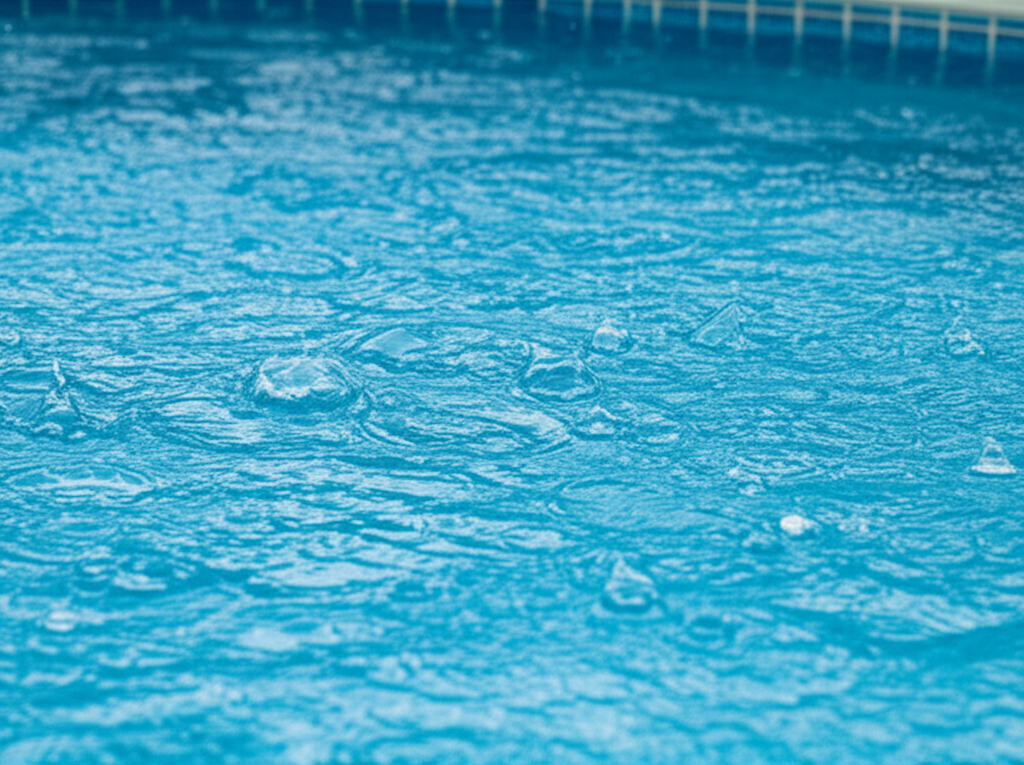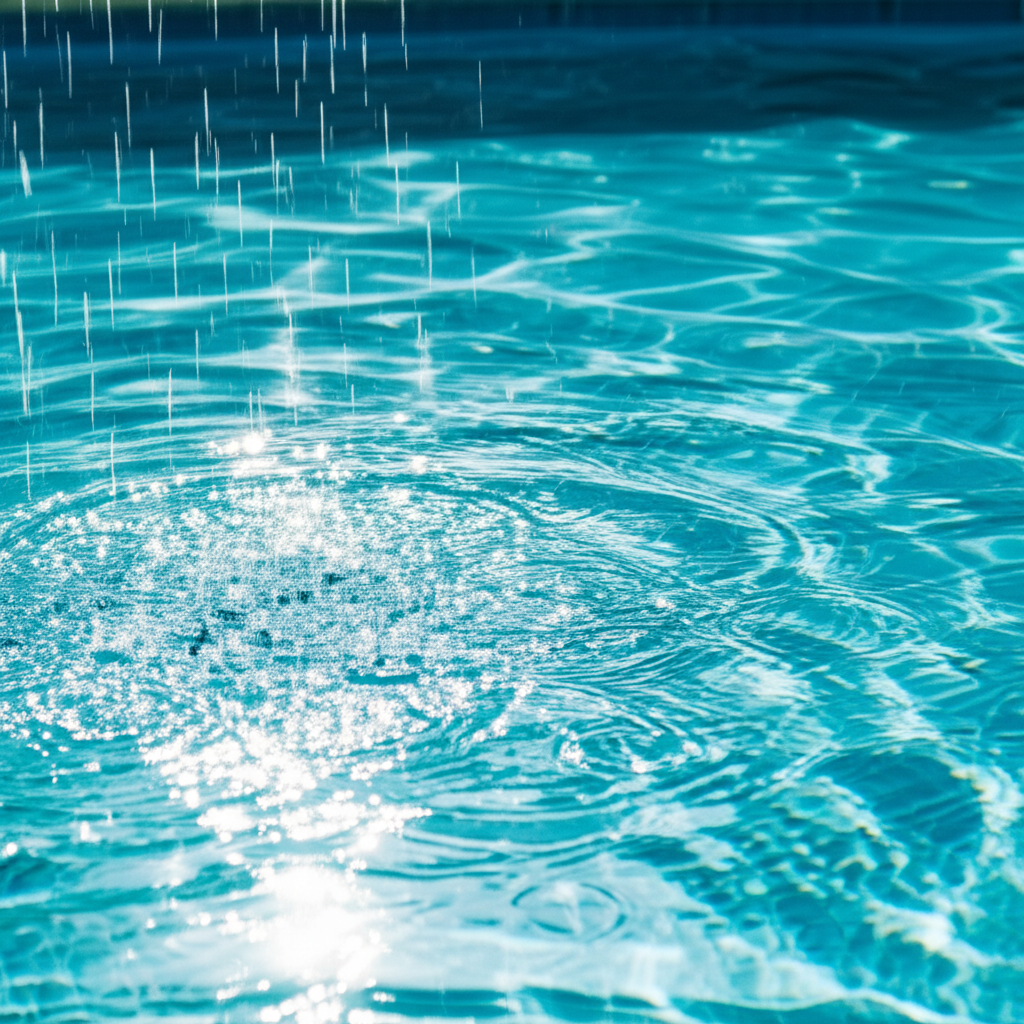- The Chemical Impact of Rain on Your Pool
- Understanding the Interplay of Sun and Chlorine
- Essential Steps After a Rain Event
- Corrective Actions for Maintaining Balance with Rain and Pool Water
- Proactive Measures
Rain and Pool Water share a relationship that’s far more intricate than most pool owners realize. While a refreshing shower might seem like harmless hydration for your swimming oasis, it introduces a cascade of chemical challenges that demand immediate attention and a thorough understanding of pool chemistry. Mastering these essential chemistry secrets is key to maintaining a sparkling, safe, and balanced swimming environment, no matter what the weather brings.
The Chemical Impact of Rain on Your Pool
Rainwater isn’t just pure H₂O. As it falls through the atmosphere, it picks up various impurities, most notably carbonic acid from dissolved carbon dioxide, and sometimes sulfur dioxide and nitrogen oxides from pollution. This often makes rainwater naturally acidic, with a typical pH ranging from 5.0 to 5.6. Considering that the ideal pH range for swimming pools is 7.4 to 7.6, even a moderate downpour can significantly alter your pool’s chemical balance.
The primary ways rain disrupts pool chemistry include:
1. Lowering pH: The acidic nature of rainwater directly contributes to a drop in your pool’s pH level. A low pH can lead to uncomfortable swimming conditions (skin and eye irritation), corrosion of pool equipment (ladders, heaters, liners), and rapid depletion of chlorine.
2. Decreasing Total Alkalinity (TA): Total Alkalinity acts as a buffer, stabilizing your pool’s pH. When acidic rainwater enters the pool, it consumes alkalinity, reducing its buffering capacity. This makes the pH much harder to control, leading to “pH bounce” where the pH fluctuates wildly and unpredictably.
3. Diluting Chemicals: Rain adds volume to your pool water. While this might seem benign, it effectively dilutes all the chemicals present, including your sanitizers, balancers, and clarifiers. This dilution is particularly problematic for chlorine levels, making your pool susceptible to algae and bacterial growth.
4. Introducing Contaminants: Rain also washes pollen, dust, leaves, fertilizers, dirt, and other organic matter from the surrounding environment into your pool. These contaminants not only strain your filtration system but also act as food for algae and bacteria, consuming dissolved chlorine at an accelerated rate.
Understanding the Interplay of Sun and Chlorine
The battle to maintain healthy pool water doesn’t end with rain; the sun plays a critical role too, especially when it comes to chlorine. Chlorine is your primary sanitizer, diligently working to kill bacteria, viruses, and algae. However, it’s highly susceptible to degradation from ultraviolet (UV) rays from the sun. Unprotected chlorine can dissipate rapidly, sometimes losing 30-50% of its effectiveness in just a few hours on a sunny day.
This is where Cyanuric Acid (CYA), often referred to as conditioner or stabilizer, comes into play. CYA forms a protective bond with chlorine molecules, shielding them from the sun’s harsh UV light. While necessary, too much CYA can bind too much chlorine, making it less effective, known as “chlorine lock.” The ideal range for CYA is typically 30-50 ppm (parts per million), though some areas with intense sun might go slightly higher.
The connection between Rain and Pool Water chemistry and the Sun and Chlorine dynamic becomes clear after a storm. Rain dilutes your chlorine and potentially your CYA. If your CYA levels drop, the remaining chlorine becomes even more vulnerable to the post-rain sunshine, creating a perfect storm for algae blooms. Conversely, if rain overflows your pool, fresh water will replace the overflow, sometimes requiring a CYA adjustment if too much treated water was lost.
Essential Steps After a Rain Event
To safeguard your pool’s health after it rains, a systematic approach is crucial. Don’t wait; act swiftly.
1. Remove Debris: Skim leaves, twigs, dirt, and any other debris from the pool surface. Empty skimmer and pump baskets. The less organic matter in the pool, the less your chlorine has to contend with.
2. Check Water Level: If the pool level is too high from heavy rain, backwash your filter or drain some water to bring it back to the normal operating level (usually halfway up the skimmer opening).
3. Comprehensive Water Testing: This is the most critical step. Immediately test your pool water for:
pH: Acidic rain typically lowers pH. Aim for 7.4-7.6.
Total Alkalinity (TA): Rain depletes TA, making pH unstable. Target 80-120 ppm.
Free Chlorine (FC): Rain dilutes chlorine and increases demand. Aim for 1-3 ppm.
Cyanuric Acid (CYA): While generally stable, heavy rain that causes significant overflow can dilute CYA. Target 30-50 ppm.
Calcium Hardness (CH): Less directly affected by rain but good to monitor. Target 200-400 ppm.
Corrective Actions for Maintaining Balance with Rain and Pool Water
Once you have your test results, you can begin making precise adjustments:
Adjust pH: If pH is low, add a pH increaser (sodium carbonate or soda ash) gradually, following product instructions. If it’s too high (unlikely after rain), use a pH decreaser (sodium bisulfate or muriatic acid).
Restore Total Alkalinity: If TA is low, add an alkalinity increaser (sodium bicarbonate or baking soda). Proper TA is essential for stable pH.
Boost Free Chlorine: With diluted chlorine and increased contaminants, you’ll likely need to add more. Consider a shock treatment (calcium hypochlorite, sodium hypochlorite, or non-chlorine shock) to rapidly re-establish a sufficient chlorine level and kill any nascent algae or bacteria. Ensure you raise your FC level significantly higher than normal for a shock, typically 10 ppm or more to achieve “breakpoint chlorination.”
Check and Adjust CYA: If heavy overflow necessitates refilling with fresh water, re-test and add CYA if levels are below the ideal range.
Run Your Filter: After adding chemicals, run your pool filter for at least 8-12 hours, or even 24 hours, to ensure thorough mixing and to filter out new contaminants. Backwash or clean your filter as needed.
Proactive Measures
Prevention is always better than cure. Here are some proactive tips:
Maintain Optimal Levels: Always keep your pool chemistry balanced, especially before a predicted rain event. Strong, stable levels are more resilient to disruption.
Consider a Pool Cover: A solid pool cover can significantly reduce the amount of rainwater and debris entering your pool, minimizing chemical corrections afterward.
* Check Equipment: Ensure your pump and filter are working efficiently to handle the extra load of contaminants after rain.
Understanding the subtle yet significant effects of rain on your pool’s delicate chemical ecosystem is a hallmark of responsible pool ownership. By diligently testing your water and making timely adjustments, you can ensure that your pool remains a sparkling, inviting sanctuary, ready for enjoyment regardless of the weather.




